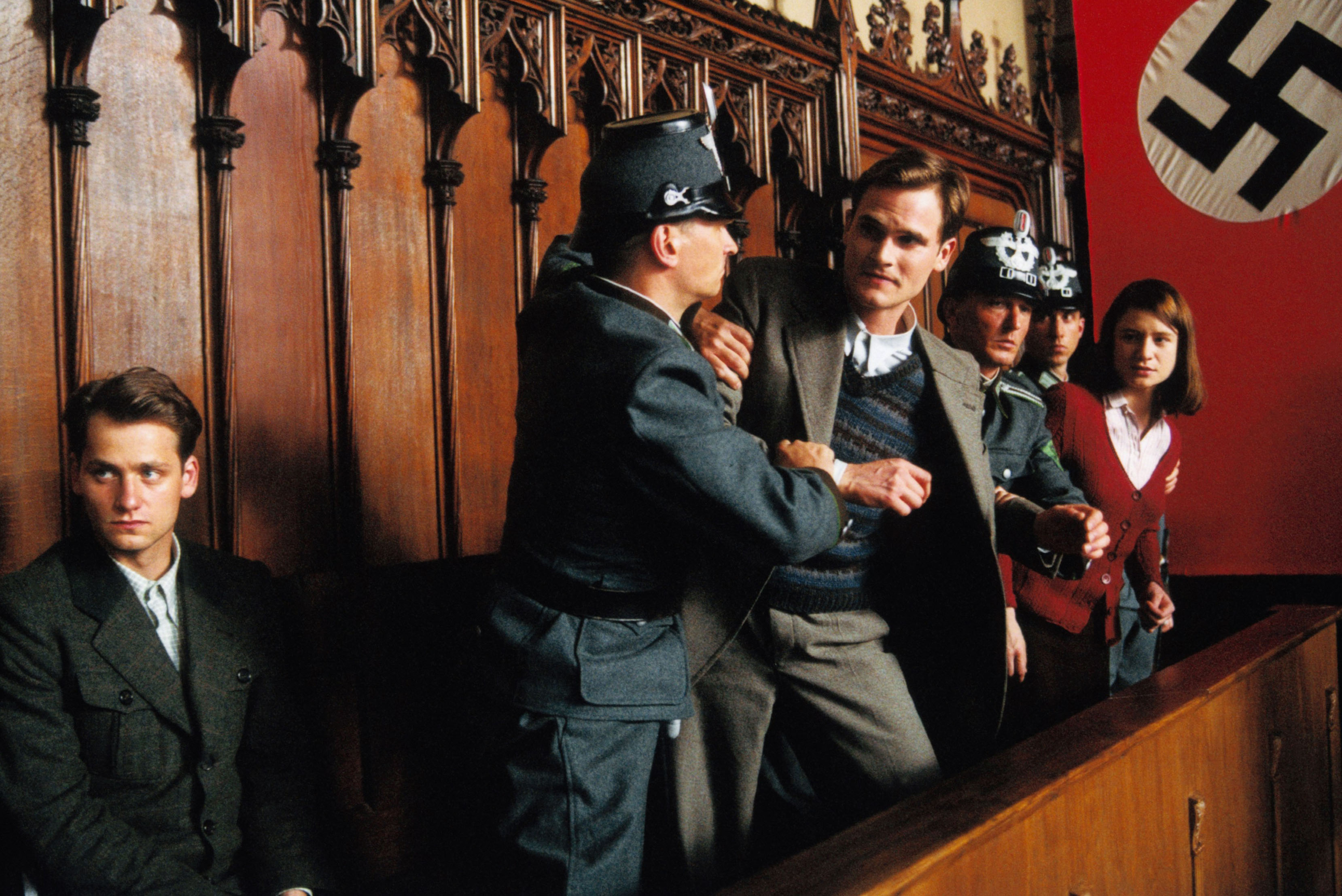Sophie Scholl: The Final Days humanizes its eponymous hero—but not those in Hitler’s regime.
German schoolchildren grow up learning the story of Sophie Scholl, the 21-year-old heroine who defied the Nazis in a dramatic act of resistance. For nearly a year, starting in 1942, she and a small band of college students—who called themselves the “White Rose”—drafted and mimeographed leaflets denouncing Hitler’s regime, sending them to addresses in and around the city of Munich and sometimes hiding them in public phone books. At night they painted anti-Nazi graffiti on walls. Finally, on February 18, 1943, Sophie and her brother Hans, both students at the University of Munich, audaciously placed stacks of anti-Nazi leaflets in the empty corridors of one of the university’s lecture halls during broad daylight while classes were underway. In a seemingly wild gesture of freedom and defiance, Sophie also dropped dozens of them from a third-floor marble banister, where they floated down into the atrium. The act caught the attention of the building janitor, who nabbed Sophie and Hans and held them until authorities arrived. The siblings were swiftly interrogated, tried, and executed along with a third member of their resistance group, Christoph Probst.
Today, Sophie Scholl is a national icon, with dozens of schools and other public institutions named for her. She is the subject of several biographies and a number of films, most recently Sophie Scholl: The Final Days (2005), written by Fred Breinersdorfer, directed by Marc Rothemund, and starring Julia Jentsch in the title role. Internationally acclaimed, the German movie received an Academy Award nomination for Best Foreign Language Film.
The plot is essentially a police procedural, much of it focused on a series of four interrogations of Sophie by Gestapo investigator Robert Mohr (Alexander Held). Screenwriter Breinersdorfer took much of the dialogue straight from recently discovered interrogation transcripts; in these scenes, Sophie nearly persuades Mohr that she had nothing to do with the composition or distribution of the flyers and had simply knocked them off the banister on a whim.
When additional evidence surfaces, however, and Sophie learns that her brother Hans has confessed, she turns defiant: “Yes, I did it. And I’m proud of it.” Then she eloquently denounces Hitler’s regime for its crimes, many of which she has heard about from friends on the Eastern Front who have witnessed massacres and seen evidence of the Jewish population’s extermination.
Jentsch’s performance as Sophie is riveting, and a strength of Sophie Scholl is its ability to humanize this larger-than-life figure, showing her to be, among other things, a young girl who listens to African American jazz singer Billie Holiday; wistfully recalls a weekend vacation spent with her fiancé on a beach on the North Sea; and reaches out to God in raw, heartfelt prayers. It also shows investigator Mohr as an intelligent man able to empathize with Sophie and appreciate her courage. Unlike the judge of the Nazis’ so-called “People’s Court,” who screams contemptuously at the defendants and turns the trial into a sham (as did real-life alter ego Dr. Roland Freisler, who also notoriously oversaw the July 20, 1944, Hitler assassination plot show trials), Mohr seems much more like a typical law enforcement officer just going about his job.
Yet at crucial moments, Mohr suddenly becomes a fanatical Nazi—reassuringly so, for it would never do to suggest that ordinary human beings could serve Hitler’s regime, although millions of ordinary human beings plainly did. But these moments, in effect, make it possible to identify only with Sophie. They protect the audience from a central aspect of the affair: that most Germans were not like Sophie nor her brother nor their fellow resisters, but rather students who kept their heads down and went on to their next class, or janitors who made denunciations to authorities, or bureaucrats just doing their jobs. By extension, this would have been true, too, of most audience members, had they been alive at the same moment in history.
It is instructive that on February 18, 1963, the 20th anniversary of White Rose’s final resistance act at the University of Munich classroom building, a memorial service was held in the very same building, organized by the college administration and attended by numerous faculty members as well as students. During the ceremony, hundreds of leaflets floated down from the upstairs balcony. But these were not replicas of the originals. Instead, they listed the names of professors then present—and the dates during which those same instructors had been Nazi Party members. “The professors became visibly flustered and angry,” recalled one participant, “the students began to heckle them in disgust at their hypocrisy, [and] the ceremony broke up in disarray.” ✯
This article was published in the June 2020 issue of World War II.

